On View
How Maria Qamar’s Feminist Desi Pop Art Went Viral on Instagram, Charmed Mindy Kaling, and Broke Into the New York Art World
The Instagram sensation makes art about the millennial Desi experience.
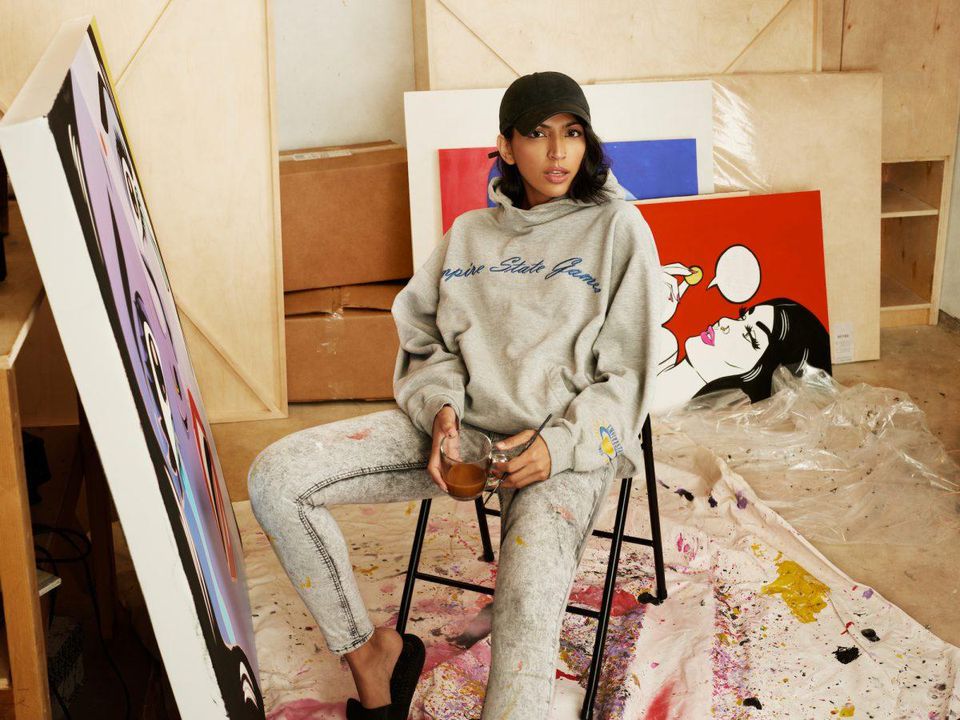
The Instagram sensation makes art about the millennial Desi experience.

Sarah Cascone

The title of artist Maria Qamar’s first solo show, “Fraaaandship,” comes from a popular pickup line among South Asian men. The Canadian-Pakistani artist—who has become an Instagram sensation for her feminist-tinged, Pop art-influenced riffs of Desi culture—had found herself commiserating and bonding with other women about how men overuse the proposal of “fraaandship” online as a euphemism for sex.
Today, Qamar has garnered enough attention—her Instagram account, @hatecopy (a reference to how much she disliked her first career, in advertising copy), has 182,000 followers—that she has someone else to screen messages for her. Fortunately, a direct message from New York dealer Richard Taittinger got through.
“When we discovered Maria’s work, we were wondering how to approach her,” Taittinger told artnet News. “Normally, as a gallery, there is a traditional way to start the discussion,” he said, but “guess what? The best way to reach out to her is to send her a message on Instagram! The galleries must go into the 21st century.”
Taittinger, whose gallery is five years old, hopes to attract a younger audience by showing social media-savvy artists like Qamar. “Galleries should not wait for people to come to us,” he said. “We should be more proactive in appealing to the new generation by using their language.”
Qamar, who lives in Toronto, wasn’t familiar with Taittinger at first. But his gallery was based in her favorite neighborhood in New York City, the Lower East Side. And, more importantly, she had long been waiting to work with an art dealer.
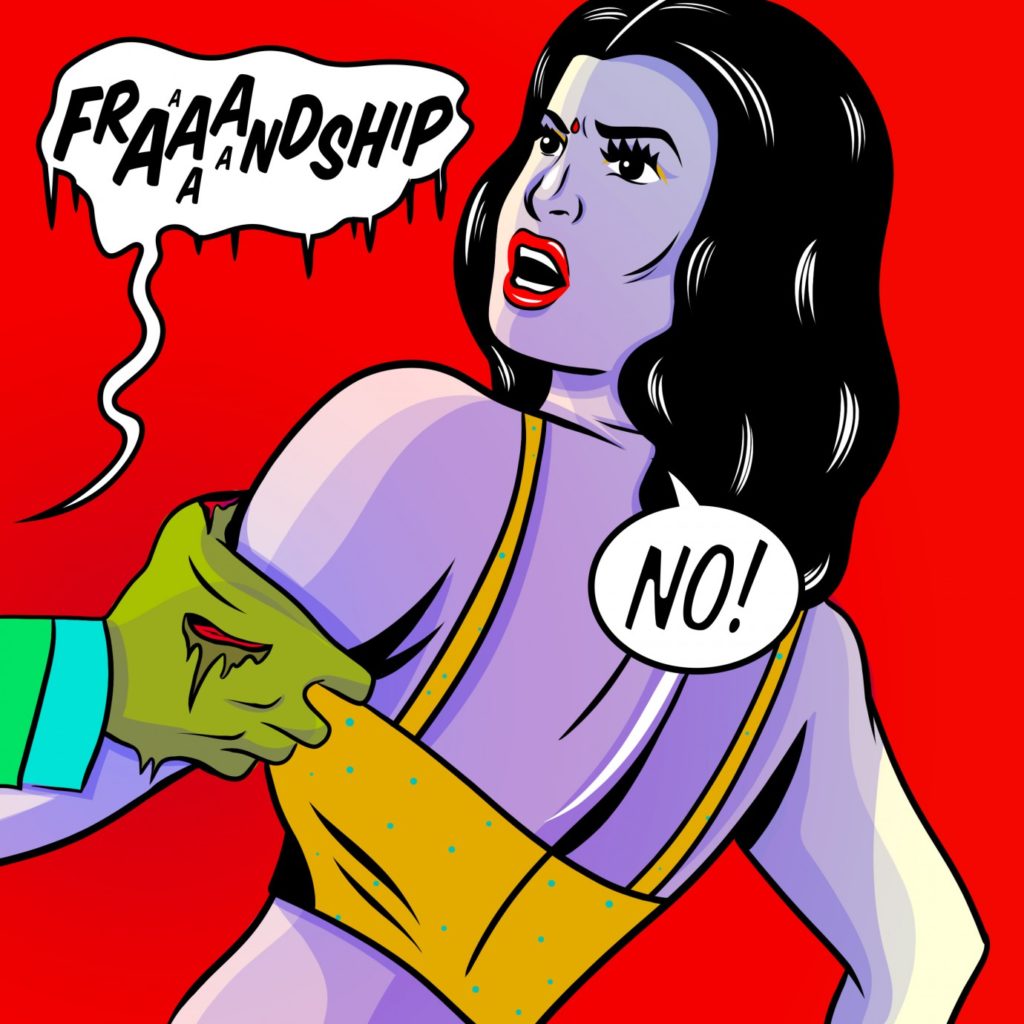
Maria Qamar, FRAAAANDSHIP (2019). Courtesy of Richard Taittinger Gallery, New York.
Qamar developed her signature style back in 2015 with a simple drawing on lined paper of a woman tearfully admitting “I burnt the rotis.” She shared the work on Instagram with the caption “what if Lichtenstein parodied Indian soap operas.”
She continued drawing and painting Bollywood-beautiful women with cartoon speech bubbles that spoke to the trials and tribulations of 21st-century Desi life in a way that immediately seemed to resonate.
At first, “I actually didn’t know I had struck a chord or that it was popular, because I thought everything I was drawing was just something that I found entertaining,” Qamar recalled. “Then I started getting requests from restaurants and different people.”
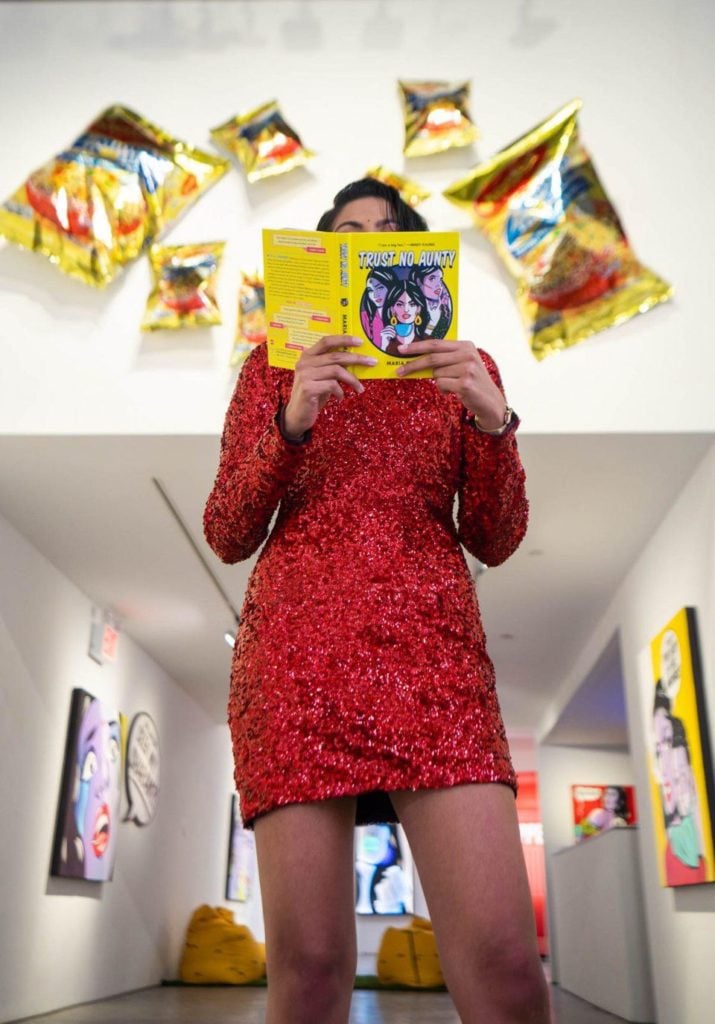
Maria Qamar with her book Trust No Aunty at “Maria Qamar: Fraaaandship” at Richard Taittinger Gallery, New York. Photo by Happy Monday.
As her following grew, Qamar was tapped to create works for Indian celebrity chef Floyd Cardoz’s Bombay Bread Bar in New York and the set of The Mindy Project, the television series created by Indian American actor and writer Mindy Kaling.
But Qamar still had to stage her own art exhibitions, finding locations and installing works for herself—until she heard from Taittinger. “It was the perfect time. I was at a point of my career where I really just wanted to paint and get that work out,” Qamar said. “This is an industry that’s hard to get into, especially for someone who hadn’t gone to art school and didn’t have any connections in the field. It seemed impossible for me to enter that space.”
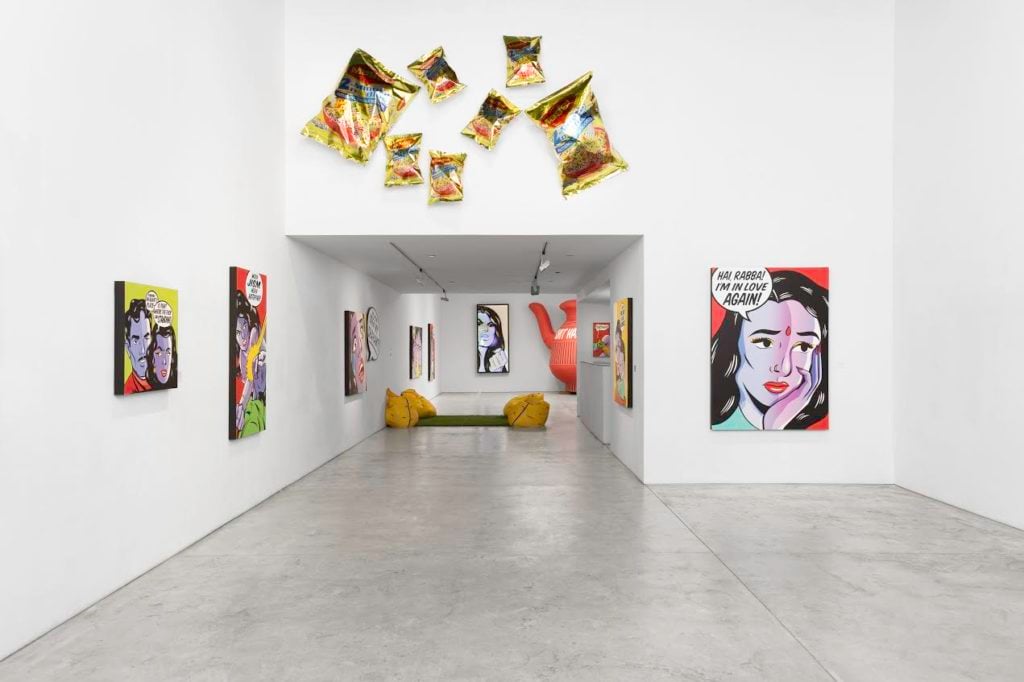
Installation view of “Maria Qamar: Fraaaandship” at Richard Taittinger Gallery, New York. Photo courtesy of Richard Taittinger Gallery.
It was Jenna Ferrey, who works for the gallery in research and business development, who first introduced Taittinger to the colorful, witty images on Qamar’s Instagram account. Although they specifically referenced the South Asian immigrant experience of a Millennial woman, Qamar’s themes were also universal.
For example, take Qamar’s giant inflatable lota, a vessel that typically sits by the toilet in South Asian households, to be used for hygienic purposes. The sculpture, which sits in one corner of the gallery, is inscribed with the words: “shit happens.”
Meanwhile, near the desk where a gallery assistant would normally sit, are a group of samosa-shaped beanbag chairs, inviting gallery goers to sit back and relax.
“People have to do a little work to understand it and I think that’s fantastic,” Ferrey said. “From the intersectional feminism point of view, it’s important to take the time to meet someone in their own space.”
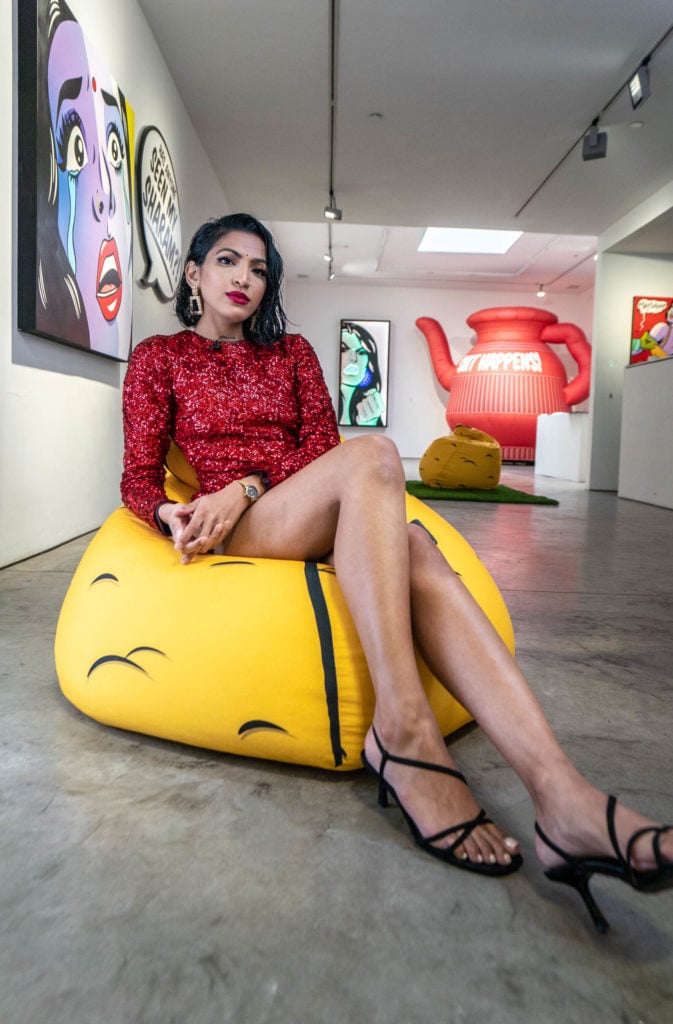
Maria Qamar at her exhibition “Maria Qamar: Fraaaandship” at Richard Taittinger Gallery, New York. Photo by Happy Monday.
From a very early age, art was a way for Qamar to articulate her struggles between her family’s traditions and her life in North America. “For me, comics were a way to communicate,” she said. “It’s like a teenager writing in her diary—but I’m drawing everything out in panels.”
This was complicated by the fact that her parents strictly disapproved of her interest in art. “I wasn’t allowed to take art history. I wasn’t allowed to engage with anything art related, period,” Qamar said. “If there were any art classes on the schedule, my parents would go insist the school take that off my curriculum!”
A large part of Qamar’s audience can relate to the challenges of growing up in a strict South Asian household, with impossible parental standards, a rotating cast of judgmental aunties, and warnings about sharam, or shame, for wearing an immodest outfit.
“There’s a billion of us out there,” Qamar said. “Our culture should be a little bit more known here.”
At the same time, she hopes the work resonate with those outside of her own community. “These are specifically the things that I have gone through that have been obstacles in my life,” she said. “But don’t we all get bullied or picked on for being different? We’re not that different—we’re fighting for basic human rights for women and women of color.”
Qamar’s show opened earlier this month to a line down the block. Among the wall-to-wall crowds were Hasan Minaj, host of the Netflix show Patriot Act With Hassan Minaj, and Rajiv Surendra, who played rapping mathlete Kevin “G.” Gnapoor in the 2004 hit Mean Girls.
“Everybody told us ‘don’t have an opening in August,'” said Taittinger. “But summer is a great time to discover a new artist!”
Sales, too, have been buzzing. The majority of the works are large-scale acrylic and ink paintings on canvas or vinyl and LED works on wood panel, which range in price from $3,000 to $15,000. There is a limited-edition print for $500, and the show is also stocked with t-shirts for $35 and posters for $45. Or at least it was.
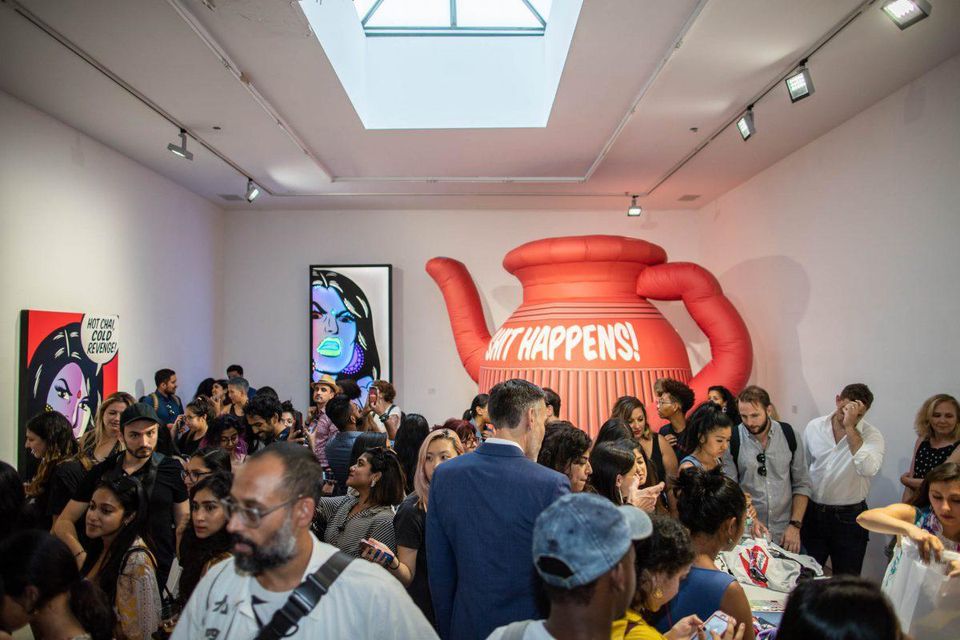
Crowds at the opening of “Maria Qamar: Fraaaandship” at Richard Taittinger Gallery, New York. Photo by Happy Monday.
“Right now everything is sold out!” Taittinger said of the T-shirts and posters when I visited on Monday, promising that new stock was set to come in the next day. “The idea is that people can have a bit of work at any price. In many galleries in New York, you need to spend $10,000 to get an artwork, which is nonsense. If you want to attract young collectors, you have to have affordable work.” (The majority of the paintings have also already sold.)
This reflects Qamar’s priorities, too: “I want to make it accessible for everybody, whether you’re a collector who is interested in original paintings, or a student who wants to show off to your friend your love for the work.”
See more works from the exhibition below, and a virtual walk-through of the show from Eazel.
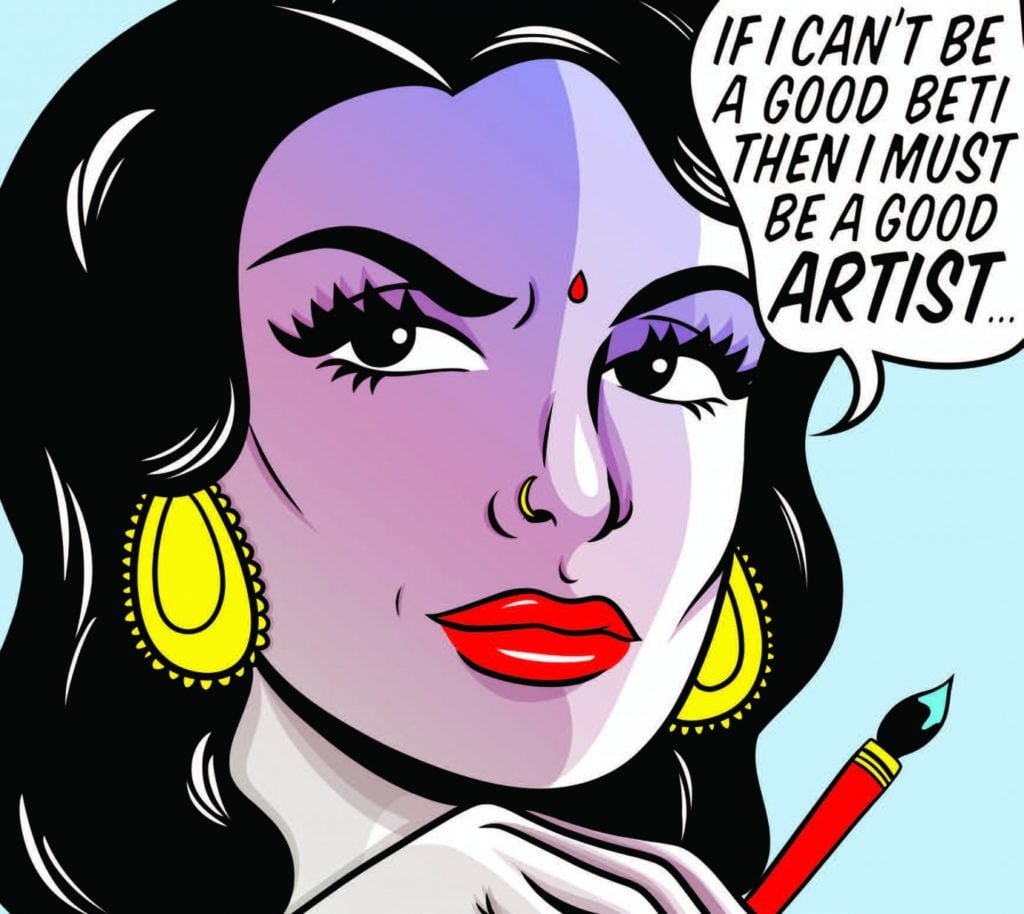
Maria Qamar, A Good Artist (2019). Courtesy of Richard Taittinger Gallery, New York.

Maria Qamar, Didi From Another Bibi (2019). Courtesy of Richard Taittinger Gallery, New York.
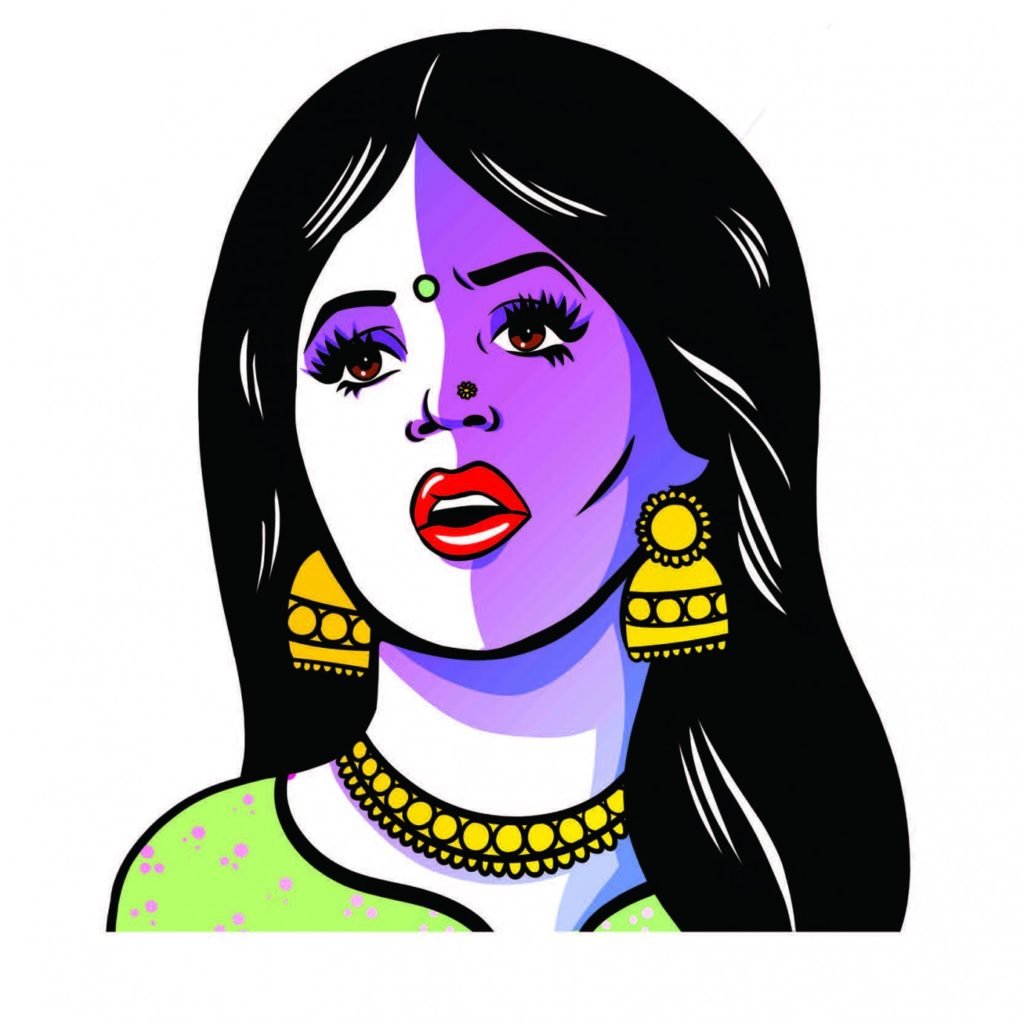
Maria Qamar, Didi 1 (2019). Courtesy of Richard Taittinger Gallery, New York.
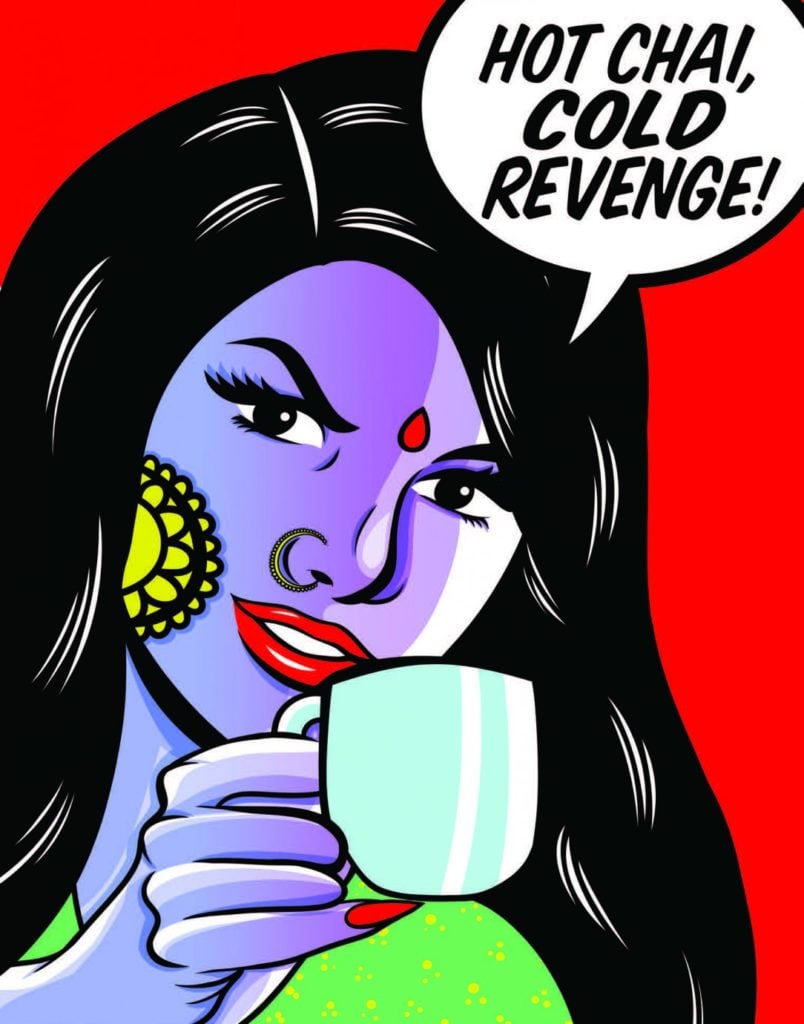
Maria Qamar, Hot Chai (2019). Courtesy of Richard Taittinger Gallery, New York.

Maria Qamar, Didi 2 (2019). Courtesy of Richard Taittinger Gallery, New York.
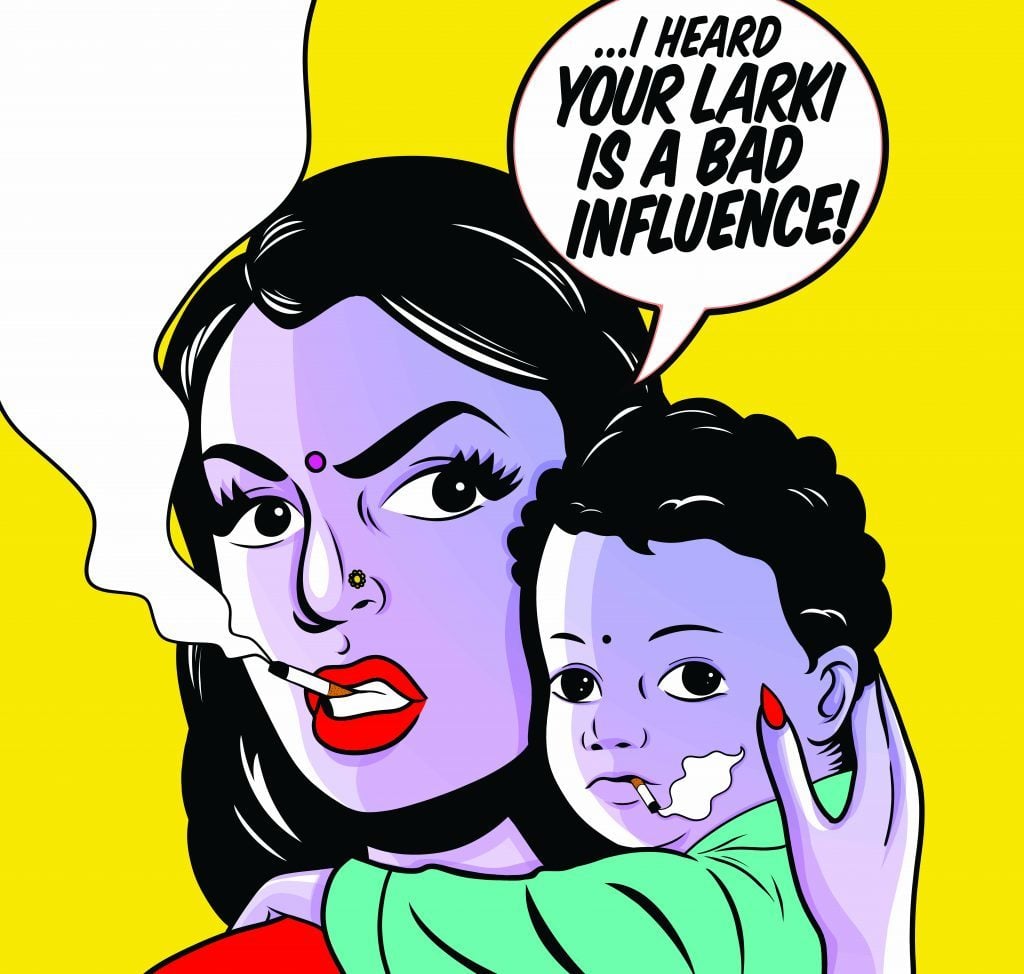
Maria Qamar, Bad Influence (2019). Courtesy of Richard Taittinger Gallery, New York.
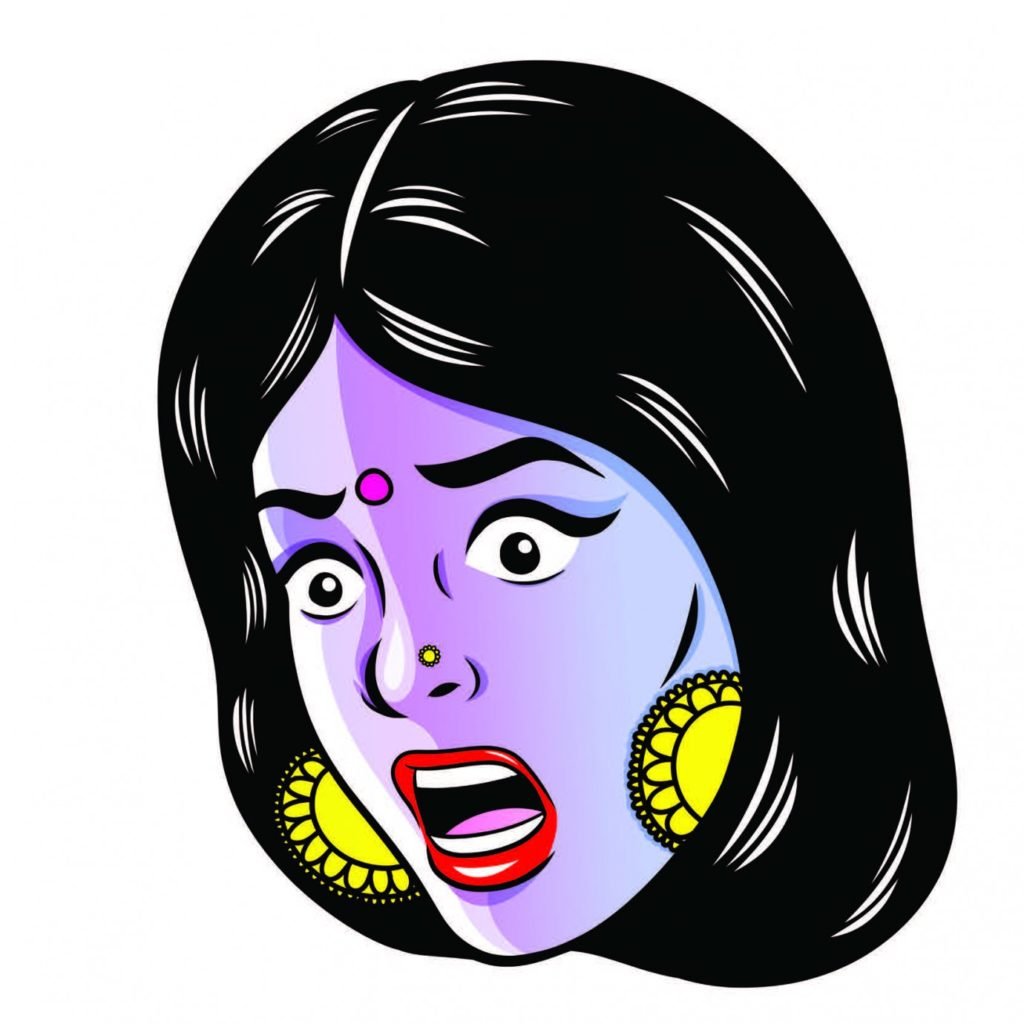
Maria Qamar, Didi 3 (2019). Courtesy of Richard Taittinger Gallery, New York.
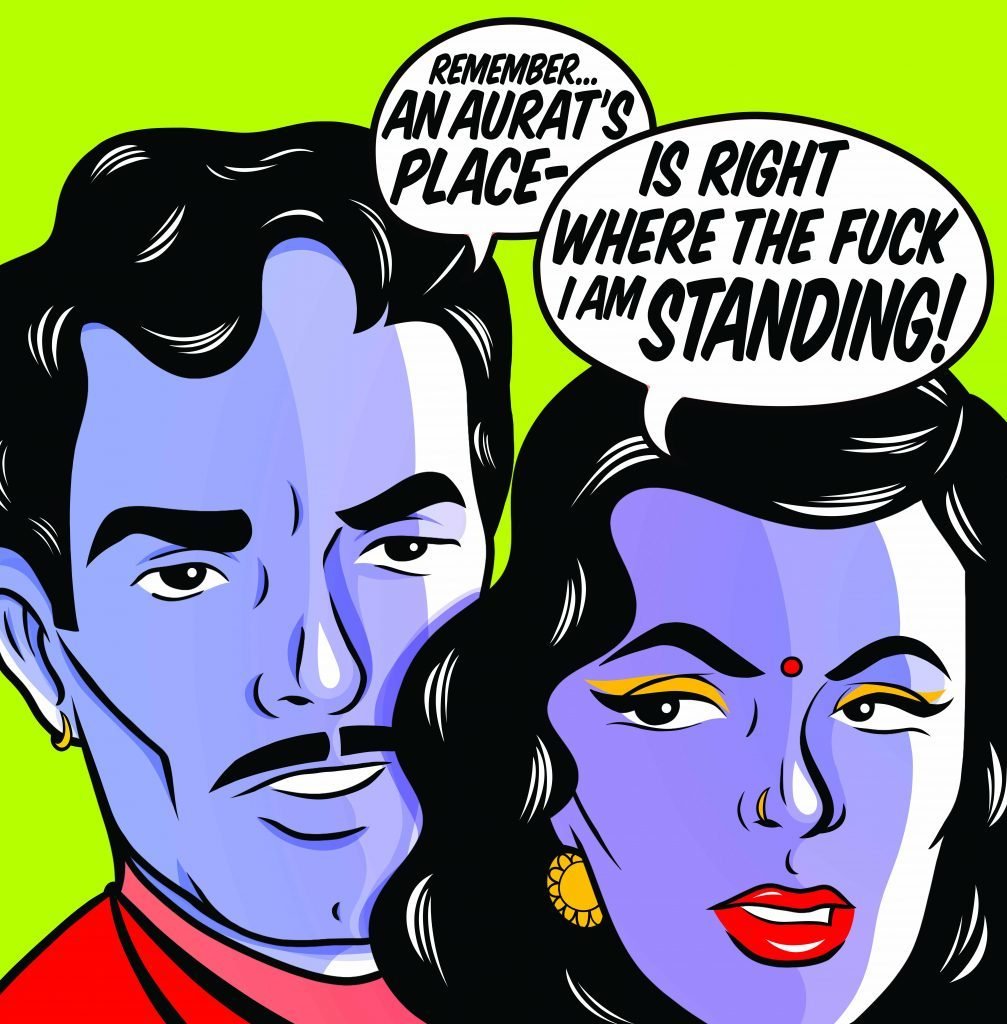
Maria Qamar, Aurat (2019). Courtesy of Richard Taittinger Gallery, New York.

Maria Qamar, Hai Rabba! (2019). Courtesy of Richard Taittinger Gallery, New York.
“Maria Qamar: Fraaaandship” is on view at Richard Taittinger Gallery, 154 Ludlow Street, New York, August 1–October 6, 2019.